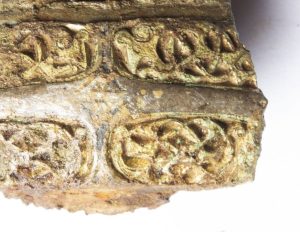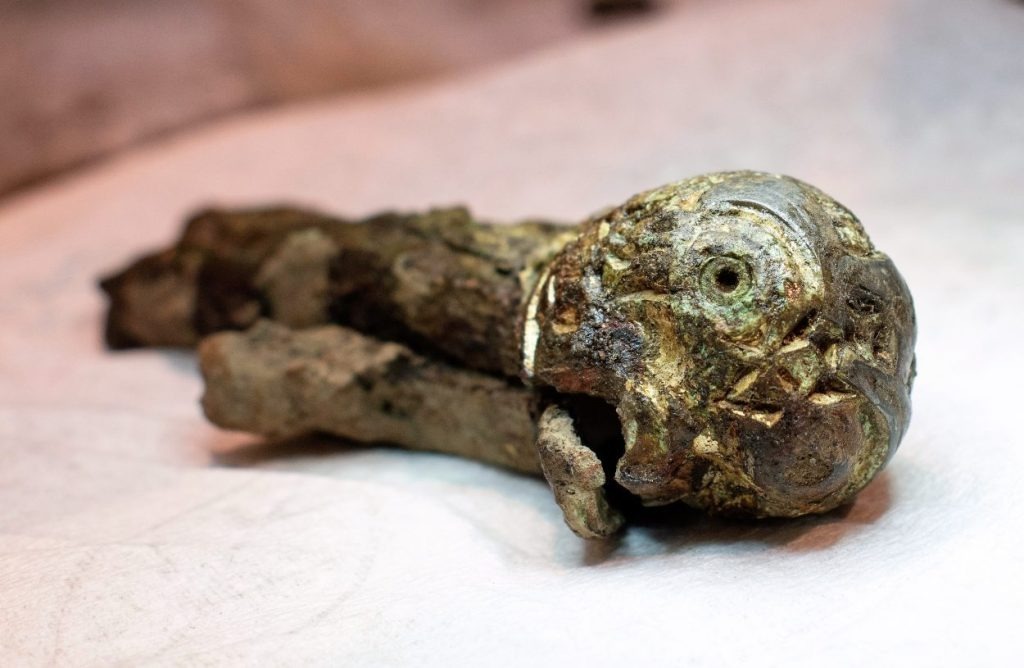The sword was found in three pieces in the Jåttå/Gausel area in Stavanger, an area renowned for the grave of the “Gausel Queen” first discovered in 1883.
Her grave is regarded among the richest Viking era female burials, containing silver and bronze clasps, silver arm rings, a finger-ring, pearls, knives, a bit and furnishings, cooking equipment, and parts of a reliquary, many of which came from the British Isles.
Under Norwegian law, the sword was reported to authorities and was sent to the Museum of Archaeology at the University of Stavanger for further study and conservation work.

Although the blade is missing, the hilt has unique details in gold and silver and includes gilded elements of the typical animal styles found during the Iron and Viking Age between AD 550 and 1050.

The hilt also contains geometrical figures in silver, made with the so-called niello technique using a metallic mixture to make black stripes in the silver. Only 20 such similar swords have been found in Norway out of a total of around 3000 Viking sword finds.
Archaeologist Zanette Glørstad from the Museum of Archaeology at the University of Stavanger said: “The technique is of a very high quality, and both the lavish and complicated décor, and the special formation of the cross guard makes this a truly unique find”.

Examples of this sword type has been found in both Eastern and Western Europe, but very few in Norway, suggesting that the sword was likely imported.
Although it is possible that the sword was a copy made by highly skilled local blacksmiths, the decor suggests that it was forged and crafted in France or England during AD 800.
It has previously been suggested that the Jåttå/Gausel-area was the starting point for extensive alliances and looting. The sword and Gausel Queen burial now suggests that the area was an important hub for contact across the North Sea.
“The location of the find close to the Gausel Queen means that we have to take a new look at the entire Jåttå/Gausel area,” says Håkon Reiersen, researcher at the Museum of Archaeology in Stavanger.

Leave a Reply